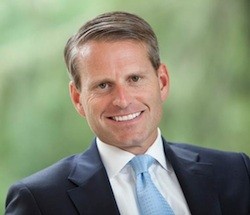
Mutual funds that employ long/short strategies are being considered by institutional asset managers as complements to, or in some cases replacement for, hedge fund investments.
“After three years of QE driven returns we have entered a market environment where the importance of fundamental research has returned,” said Jim Dilworth, CEO and founder of Simple Alternatives. “This is a great time for investors to consider adding a long/short strategy to their portfolio.”
Simple Alternatives is a specialized investment manager focused on liquid alternatives. Its flagship product, S1 Fund, is a multi-manager alternative mutual fund that utilizes a team of fundamentally-based long/short equity managers.

Jim Dilworth, Simple Alternatives
“Our focus and priority has always been on delivering the highest risk/adjusted performance as possible,” Dilworth said. “Now that the S1 Fund has risen to the top of the leader board (Morningstar 5-star), we are looking to intelligently and methodically expand our distribution capabilities. Over the last 12 months, there’s been a tsunami of interest in this space, with launches of alternative strategy mutual funds in a host of shapes and sizes.”
Morningstar classifies liquid alternative mutual funds into one of four substrategies common among private placement hedge funds: equity long/short, multi-alternative, managed futures, and market neutral.
Equity long/short mutual funds represent 37% of assets allocated across liquid alternative mutual funds, making it the largest among the four styles of liquid alternative mutual funds. The average size of an equity long/short mutual fund, $431 million, although comparable to other liquid alternative mutual funds, is well below that of the average equity mutual fund (estimated to be $1.3 billion in 2012).
In a paper published in the Winter 2014 issue of the Journal of Alternative Investments, David McCarthy, a hedge fund specialist, concludes that long/short equity funds and hedge funds offer investors substantially similar equity exposures. Comparative performance data show similar rates of return across equity long/short mutual funds and equity long/short hedge funds, and subsets of equity long/short mutual funds were found to outperform private placement hedge fund indexes.
“The only way to access a long/short equity hedge fund manager previously was through a limited partnership vehicle, which was limited to accredited investors,” said Dilworth. “The advisers who manage money on behalf of retail investors want to allocate their clients’ capital according to best practices. Endowments, foundation, and pension funds have allocated a large percentage of assets into alternative strategies.”
“In the case of an endowment or family office, half of their investments might be in alternative strategies,” Dilworth continued. “Now that there are an increasing number of alternative strategy mutual funds available, the retail industry is catching up to what the institutions have been doing for the past ten to fifteen years.”
“Smart beta” ETFs represent another liquid alternative product, but are not as robust as mutual funds, Dilworth said. “The ETF industry is traditionally passive exposure, and the alternative ETF strategies are passive as well, and most are just trying to mimic the return profile that one would expect in a true alternative strategy,” he said.
Simple Alternatives’ approach is more like the hedge fund model in that it’s targeting the institutional client. “Our target market is high-net worth advisers and fee-only RIAs who use hedge funds and funds of funds, and we are offering them the purest way to access these hedge fund managers in a mutual fund structure,” said Dilworth. “We are adopting a high-touch high-service approach rather than take a broad canvass approach to broker-dealer channels. We are focusing up the food chain on a more institutional type of client.”





